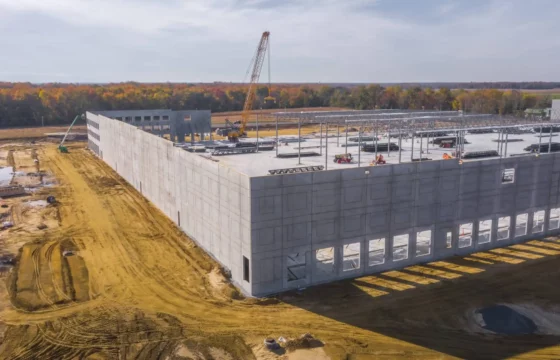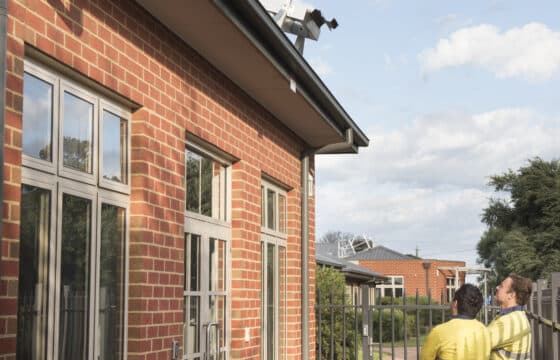eSAFE Incident Alert – Worker seriously injured after fall from roof
In October 2020, a worker suffered serious injuries when he fell through an open void in the roof of a warehouse. The worker was employed by a contractor engaged to replace roof sheeting.
| IMPORTANT: These findings are not yet confirmed and investigations are continuing into the exact cause. |
Preventing a similar incident
Falls are a major cause of death and serious injury at workplaces. Risk of falling is common for many work activities and serious injury can result depending mainly on the height and surface below. There may also be additional risk when working on or near fragile roof surfaces. Roofs are likely to be fragile if they are made with:
- asbestos sheets
- poly carbonate or plastic commonly used in skylights
- fibre cement sheets
- liner panels on built-up sheeted roofs
- metal sheets and fasteners (especially when corroded).
Before commencing any work on a roof or at height, all surfaces must be thoroughly inspected to identify any potentially fragile spots. All locations and tasks which could lead to fall injury should also be identified. This includes access to areas where the work is to be done. Close attention is required for tasks:
- on any structure or plant being constructed or installed, demolished or dismantled, inspected, tested, repaired or cleaned
- on a fragile surface such as cement sheeting roofs, rusty metal roofs, fibre glass sheeting roofs and skylights
- on a sloping or slippery surface where it is difficult for people to maintain their balance like glazed tiles
- near an unprotected open edge (for example, removed roof sheeting).
The person conducting the business or undertaking (PCBU) must manage risks associated with falls at the workplace. Effective risk management starts with a commitment to health and safety from those who manage the business. Managing work health and safety risks associated with falls is an ongoing process and involves four steps; the identification of hazards, assessing risks, controlling risks, and reviewing control measures to ensure they are working.
Once risks have been assessed, the next step is to control risks associated with falls. These control measures are ranked from the highest level of protection and reliability to the lowest and are known as the hierarchy of control. PCBUs must work through this hierarchy to choose the controls that most effectively eliminate or, where that is not reasonably practicable, minimise risk.
In managing the risk of falls, the WHS Regulation requires specific control measures to be implemented, where it is reasonably practicable to do so. This can be achieved by doing one or more of the following:
- elimination of the hazard
- substituting the hazard causing the risk with something of lesser risk
- implementing engineering controls
- administrative controls
- personal protective equipment (PPE).
Note
Administrative control measures and PPE rely on human behaviour and supervision, and used on their own, tend to be least effective in minimising risks.
Some risk control measures cannot be simply classed under only one of the five main categories listed above. Similarly, effective control measures are often made up of a combination of controls. Some common risk control measures that can be used to minimise possible injury from roof falls hierarchy include:
- Elimination – constructing a roof with the roof structure on the ground and then lifting it into place – this can eliminate many falls from heights hazards but is only suitable for the construction of some roofs on new structures where the roof can be lifted into place. In addition, lifting the roof into place will create other hazards that need to be addressed
- Substitution – using an Elevating Work Platform (EWP) to do work on a roof so workers can remain within the EWP and avoid standing on the roof. This is primarily an example of substituting the hazard for a lesser hazard. However, an EWP design may also be considered an engineering control measure and the EWP must be assessed to determine whether it is the most suitable one for the task/s. The safe operation of EWPs also relies on safe work procedures (i.e. administrative controls), which includes ensuring operators hold the relevant High Risk Work Licence HRWL (where required) to operate the particular EWP.
- Engineering – ensuring safety mesh, complying with AS/NZS 4389:2015, has been installed under the roofing and skylights and perimeter edge protection (complying with the Work Health and Safety Regulation 2011) has been installed on the perimeter of the roof. Both safety mesh and edge protection are primarily engineering control measures that address the risk of falling through the roof or off the roof edge. However, safe systems of work need to be implemented for the workers installing the safety mesh and edge protection.
- Administrative – travel restraint systems intended to prevent a fall from a roof edge by physically restricting how close a worker can get to a roof edge. These systems are generally unsuitable where a fall through a roof can occur (i.e. because the roof is fragile or there is no safety mesh under the roof sheeting). They also largely rely on worker training and the worker following a safe system of work. A travel restraint system is a combination of an engineering control (system design), administrative control and personal protective equipment (PPE) (i.e. the tethering lines and harness).
- Personal Protective Equipment – fall arrest systems for work on roofs are the least preferred risk control measure because they do not prevent a fall occurring but arrest the fall once it has occurred. The worker can still be injured, even if the fall arrest system is set up correctly and the worker’s fall is arrested before the worker hits the ground or another obstruction. After the fall, the worker must be rescued both promptly and safely. Fall arrest systems are primarily a form of personal protective equipment but also rely on engineering controls (i.e. anchorage point strength, harness and lanyard design) and administrative controls (e.g. making sure the lanyard is connected and not too long).
In addition to the hierarchy of control, PCBUs should follow the manufacturer’s instructions for the safe operation and use of plant, machinery and/or systems engaged by the PCBU.
Source: Worker seriously injured after fall from roof, Workplace Health and Safety Queensland, 2020, www.vision6.com.au


